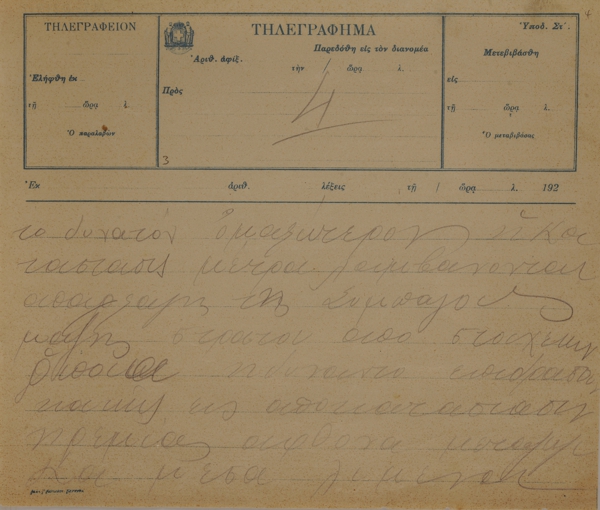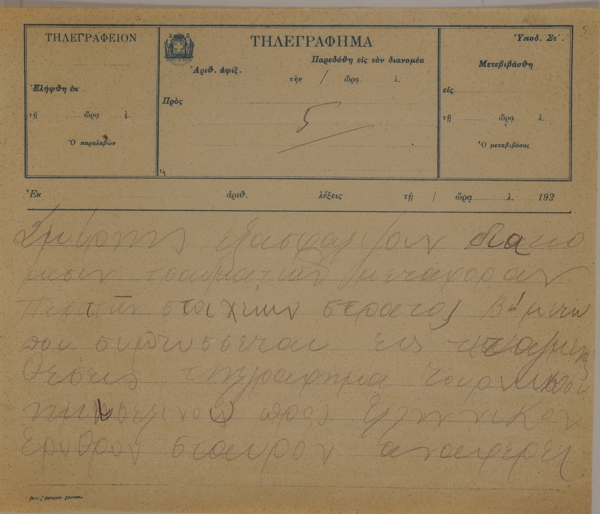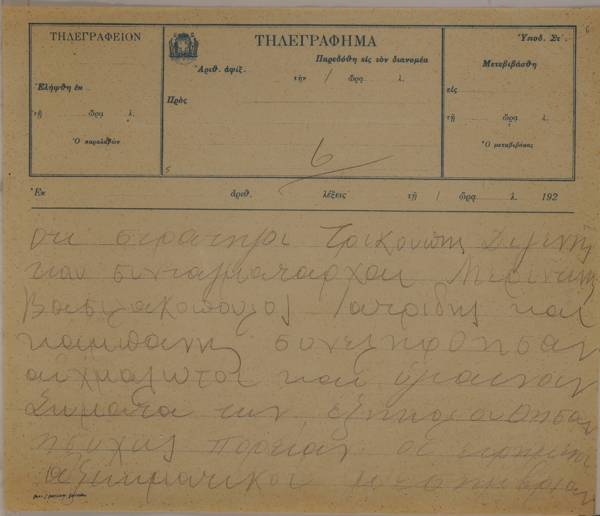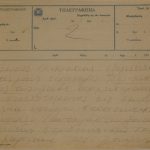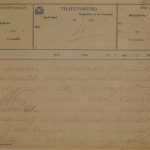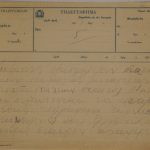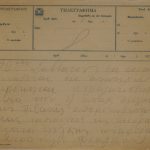Collections
Asia Minor catastrophe
An 8 page telegram whereby the prefect announces a press release. It is reported that the new commander in chief Polymenakos is in charge and he is meeting chief of staff Dousmanis, the Military affairs minister, in Smyrna (today Izmir), about the appropriate measures to be taken so that the present situation goes on with the most orderly way. The sender also refers to the transport sector in Smyrna, which secures the medical evacuation of those injured and the redeployment. Furthermore, it refers to a Turkish telegram to the Greek Red Cross which notifies that generals Trikoupis, Digenis and colonels Merentinis, Vasilakopoulos, Iatridis and Kampanis were arrested and held captive. The circumstances under which they were arrested are also mentioned; they were isolated and ambushed. The term Asia Minor Campaign refers to a series of military events that occurred after World War I, during the partitioning of the Ottoman Empire, between May 1919 and October 1922. The end of the war: Great Fire of Smyrna. Since August 1922, the situation was dramatic on the front, but it was not communicated in full detail to the Greeks in Smyrna. Even the high commissioner had incomplete information from the Army Headquarters. At the end of August, the quay of Smyrna was full of people and baggage. On August 24, all those hospitalised in military hospitals embarked on boats and sailed to Piraeus. On August 26, troopships transported Greek politicians, army officials and the gendarmerie. In the meantime, Kemal's forces had just arrived at the outskirts of the city. On August 31 the first big fire was set and until September 3, the biggest part of the city was incinerated.




